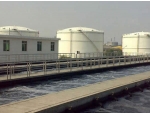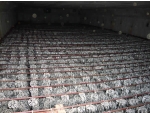

Wastewater treatment, or sewage treatment, is a water purification process to achieve the quality requirements on drainage or recycling. Wastewater treatment system is widely used in construction, agriculture, transportation, energy, petrochemical, environmental protection, urban landscape, medical, food and other fields, and is increasingly more influential in people’s daily lives.
According to waste sources, wastewater treatment is generally classified into production sewage treatment and domestic sewage treatment. The former one includes industrial, agricultural and medical sewage, while the latter one is the one generated in daily life, referring to a complex mixture of various forms of inorganic and organic compounds, including: floating and suspending solids; colloidal and gelatinous diffusates; and pure solution.
The pollution may either be due to natural cause or human activities. Currently, the more harmful one is the man-made pollution, which can be further classified into chemical pollution, physical pollution and biological pollution. The main pollutant sources are: 1) the discharge of untreated industrial wastewater; 2) the discharge of untreated sewage; 3) extensive use of farmland fertilizers, pesticides, herbicides; 4) industrial waste and garbage stacked on riverside; 5) soil erosion; 6) mine effluent.
Treatment Approach
The wastewater treatment can adopt physical, biological or chemical methods.
1. Physical methods: This method takes advantage of physical principles and separates water insoluble substances without changing the chemical properties in the process. The commonly used measures include gravity separation, centrifugal separation, reverse osmosis, air flotation and so on. Physical wastewater treatment is relatively simple and economical, suitable for towns and villages that have large water area, strong self-purification capacity, and where is less demanding for purification degree.
2. Biological methods: By the use of microbial metabolism, the method oxidizes the dissolved or colloidal organic matters into stable inorganic substances, thus completing water purification. Common measures are activated sludge and biofilm methods. The purification level of biological wastewater treatment is higher than the physical method.
3. Chemical methods: In this way, chemical reaction is involved in the disposal or recycling of dissolved substances or colloidal substances in the sewage. This method used in industrial wastewater treatment. The commonly used methods are coagulation, neutralization, oxidation-reduction, and ion exchange. Chemical treatment brings good effect but costs high, and it is more often employed as a further treatment after the biological one, to improve water quality.
Degree of Treatment
Modern wastewater treatment may go to different depths. It can be graded into primary, secondary and tertiary treatment. The degree of treatment is determined by the water quality and whereabouts of the water after treatment.
1. Primary Treatment
The primary treatment mainly removes suspending solid pollutants, and most physical treatment completes and stops at this step. After the primary treatment, BOD can be generally removed by 30%, which falls behind the discharge standards. The primary treatment is a pretreatment for the secondary one.
2. Secondary Treatment
The secondary wastewater treatment removes colloidal and dissolved organic pollutants (BOD, COD substances) in the waste water, with a removal rate of up to 90%, so as to meet discharge standards for organic pollutants. The suspended solid removal rate reaches 95%, and the discharged water is much cleaner.
3. Tertiary Treatment
The tertiary treatment performs further processing on hardly degradable organics, nitrogen and phosphorus-soluble inorganic substances that can lead to eutrophication of water. The main methods are nitrogen and phosphorus removal, coagulation sedimentation, sand filtration, activated carbon adsorption, ion exchange and electrodialysis.
Wastewater Treatment Equipment
The most important are: centrifuges, sludge dewatering machine, aerators, microfiltration machine, flotation machine, ozone generator, etc. Various water treatment chemicals such as flocculants also participate in the processing.